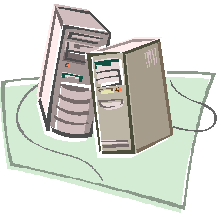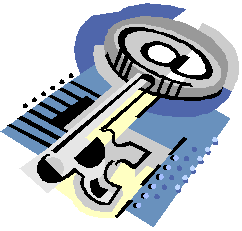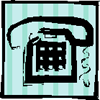| Cisco ISDN | Home |

Certifications

Cisco

Downloads

IP

PC

Protocols

RemoteAccess

Security

Telecommunications

Tools

Unix

Web
Cisco ISDN Configuration
Configuration Example
Changing the username and password
Changing the dial number
Changing the telnet and enable passwords
Troubleshooting connectivity problems
Configuration Example
Thanks to Matt Musselman for this commented example.
version 12.0 service config no service pad service tcp-keepalives-out Generates TCP keepalives to bring the BRI interface up on system startup and after disconnection. service timestamps debug uptime service timestamps log datetime This enables logging of events, such as access-list blocks and ISDN line changes. service password-encryption Encrypts passwords so that they don't appear as plaintext in the configuration. ! hostname training ! enable secret 5 _password_ ! ip subnet-zero ip classless ! ip name-server 129.250.35.250 ip name-server 129.250.35.251 isdn switch-type basic-ni ! interface Ethernet0 ip address 206.50.17.89 255.255.255.248 no ip directed-broadcast ! interface BRI0 no ip address no ip directed-broadcast encapsulation ppp dialer rotary-group 0 isdn spid1 21426584350101 2658435 isdn spid2 21426588200101 2658820 isdn timeout-signaling Flushes the ISDN D channel if no switch response is received within 1 second. This is only available on newer IOS's. no fair-queue ! interface Dialer0 ip unnumbered Ethernet0 Uses the IP address for Eth 0, instead of having to assign a separate WAN IP. no ip directed-broadcast Prevents any incoming traffic to a directed broadcast (all 1's in the host bits), keeping any networks behind this router from being used as a denial of service amplification network. encapsulation ppp dialer in-band dialer string 2147601243 dialer hold-queue 70 dialer load-threshold 1 either dialer-group 1 no fair-queue ppp authentication pap callin ppp pap sent-username matt1 password 7 11041811030B5A ppp multilink ! ip route 0.0.0.0 0.0.0.0 Dialer0 ! dialer-list 1 protocol ip permit Permits all IP traffic to trigger dialout ! line con 0 exec-timeout 0 0 transport input none stopbits 1 line vty 0 4 password _password_ login !Changing the username and password
Changing the username and password that a Cisco ISDN router uses to dial-up to the Internet is fairly easy thing. However, you do need to be in priveledged exe mode and you need to be able to see the running configuration. To change the username and password in this example, we see that the username and password are in the Dialer0 interface with the configuration line of:
ppp pap sent-username matt1 password 7 11041811030B5ATo change that line, you need to get into enable and remove it. Then, you can add the appropriate line. This would look like:
router>enable Enter password: router#conf t router(config)#interface Dialer0 router(config-if)#no ppp pap sent-username matt1 password 7 11041811030B5A router(config-if)#ppp pap sent-username matt2 password passwordOnce you have done that, press [CTRL-z] to exit the configuration. Then, save the configuration by running the copy running-config startup-config command. Finally, either have the router disconnect and reconnect or power cycle it.
Changing the dial number
Like the above example, you need to remove the old configuration line and add the new one before the change will work. To change the dial number, do the following:
router>enable Enter password: router#conf t router(config)#interface Dialer0 router(config-if)#no dialer string 2147601243 router(config-if)#dialer string 9724079786That will remove the old configuration line and put in its place a new dialer number in the Dialer0 interface.
Changing the telnet and enable passwords
Changing the telnet and enable passwords for Cisco routers is similar to the above examples. However, there are several different ways that this can be accomplished. Again, like the previous examples, you need to see the running configuration to see how it is currently configured. In this example, we can change the telnet password by doing the following:
router>enable Enter password: router#conf t router(config)#line vty 0 4 router(config-line)#no password password router(config-line)#password passwordThe line vty 0 4 command that was issued put the router into the line that controls telnet logins. Then, we removed the old password. Although this is not necessary, I have seen some routers be picky about that step. Finally, the new password was added to the vty line.
For the enable password in this configuration, there are actually two lines that affect this:
enable secret 5 _password_ enable password _password_The enable secret line stores the password in the router configuration in encrypted format, so even if you can view the running configuration, you will be unable to see the password. The enable password line stores the password in plaintext. If an enable secret password and an enable password are both configured, then the Cisco router uses the enable secret line by default.
To change the enable password in this example and do a bit of clean up, we can do the following:
router>enable Enter password: router#conf t router(config)#no enable password router(config)#no enable secret router(config)#enable secret passwordTroubleshooting connectivity problems
The table below lists many commands that can be used to troubleshoot ISDN connectivity problems on a Cisco router. Reading the output of the commands is not difficult, but remembering which commands to use can be, so this list below will help you out.
Command Description show interface BRI0 Shows the statistics, such as packets sent and received and the number of CRC's on the BRI interface. This is useful in seeing the amount of errors that the BRI interface is receiving. It is best used in conjunction with the clear counters BRI0 command so that the information listed is current. show dialer Lists the general diagnostic information about an interface configured for DDR, such as the number of times the dialer string has been successfully reached, and the idle timer and fast idle timer values for each B channe. Current call-specific information is also provided, such as the length of the call, and the number and name of the device to which the interface is currently connected. show isdn active Use to show if a call is in progress and which number is being dialed. show isdn status Shows the statistics of the ISDN connection. show ip route Displays the routes known to the router, including static and dynamically learned routes. debug isdn q921 Verfies that you have a connection to the ISDN switch. debug isdn q931 Displays call setup and teardown messages. debug dialer Shows information such as what number the interface is dialing. shutdown and no shutdown These commands can be used to disconnect any call in progress and reset an interface. clear interface BRI0 This command causes the BRI interface to reset itself and then to re-establish a connection to the switch and then dial-up to the number that it is configured for.
Last modified: October 26 2003.